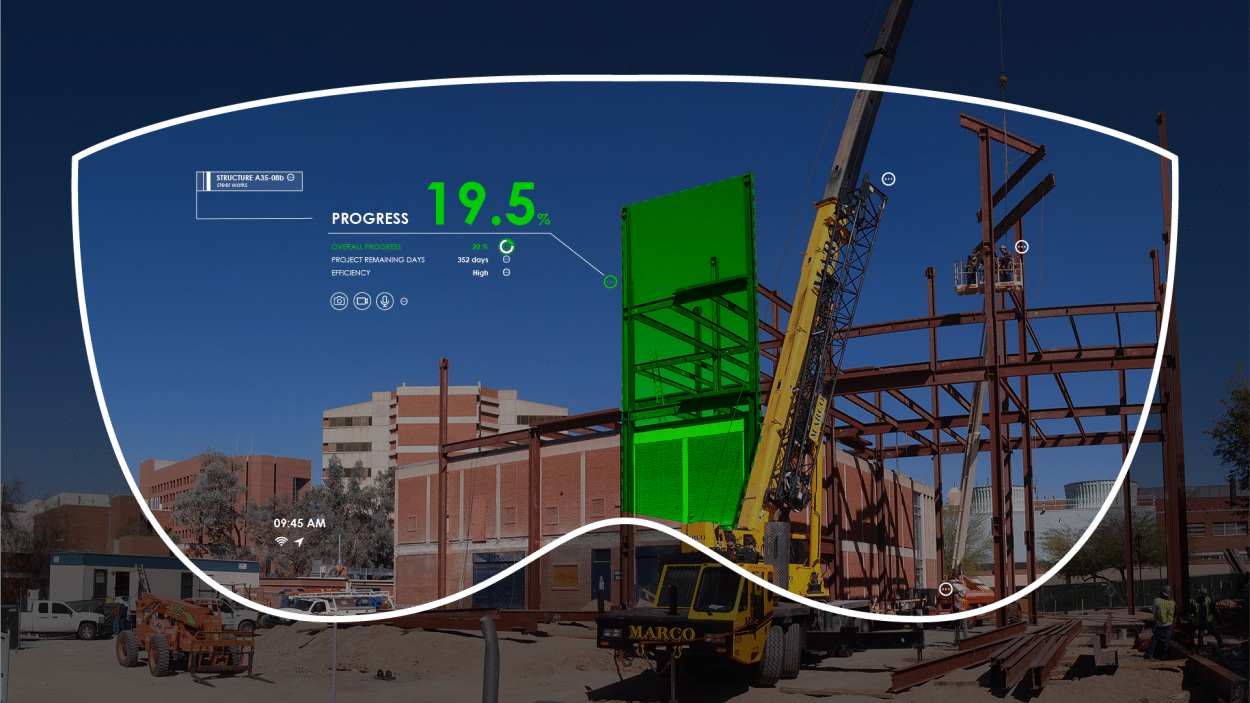Your workplace is about to be augmented – or maybe even turn virtual. AR and VR are becoming powerful tools for a wide range of industries as they increase productivity and save time.
AR smart glasses allow users to superimpose graphics, video or text onto the real world, right in front of your eyes. For industry, smart glasses can display information and data useful for complex tasks.
On a construction site, AR glasses can overlay plumbing and electrical installations. Once construction is completed, the glasses can then give a sort of X-ray vision of what’s behind the walls.
Alexis Macklin is an analyst of AR/VR at consulting firm Greenlight Insights. For him,
A lot of what’s happening in the space of augmented reality is driven by enterprise. It gives it more credibility to be able to see it with your own eyes rather than just describing it.
10 Times Faster
Whereas consumer-focused AR products have to be well-designed, industry cares less about the looks and more about the functionality and durability. AR glasses are now checking both these boxes. This is benefiting heavy industry and manufacturing where AR can be a godsend for complex tasks.
Engineers at Dutch construction-services company Bam sometimes have to do a sprinkler test, a complicated process with 59 steps that is performed from memory. The risk of making mistakes is significant, so in collaboration with AR smart glasses manufacturer Daqri, Bam created an app that overlays directions on the valves and switches that need to be turned and shows which indicator lights should be lit at each step. Since switching to AR glasses there have been 30 times fewer missed steps when performing the sprinkler test.
Siemens has also seen similar results since turning to AR to improve the task of assembling heavy gas burners for gas turbines with step-by-step instructions and 3D visualizations. For Jason Haggar, vice president for global partner and developer programs at Daqri,
On average it would take a skilled technician about 450 minutes to do that task using printed instructions or videos but with AR it now takes him 45 minutes. That’s a huge productivity leap.
For another Daqri customer, a laser microscope manufacturer, AR reduces travel time. Rather than having to fly across the world to perform on-site maintenance for clients, their experts can use smart glasses to walk a local technician through the steps to fix an issue. The expert can see the technicians field of view and even draw annotations in real-time directly in front of the technician’s eyes, explains Jason Haggar.
Not only does it limit the microscope’s downtime, it also saves the travel costs of having to fly an expert to a drilling platform in the North Sea to fix something.
Training Gets Virtual
VR is a bit slower at making its way into industry but its ability to instantly parachute people into a new universe makes it an excellent training tool.
One of the companies taking advantage of this is UPS. The global courier service has more than 100,000 drivers worldwide, so training is a huge task. UPS has developed a program in which student drivers put on a VR headset and are taken through a street scene as if they were driving a delivery van. The learner has to identify hazards such as a pedestrian about to step onto the road or a parked car blocking the view.
Jon Bowers, Manager at UPS’ Integrad training center in Atlanta, explained:
We see students increase their skill set at a higher rate, quicker. We noticed that when they’re immersed in this virtual environment they’re more focused on the training. And we can see that when we put them on the road, they’re better prepared.
Quiet Revolution
Greenlight Insights forecast that the market for AR smart glasses will grow to 40 billion dollars by 2023. VR will double that by 2022, but that also includes consumer products.
For many companies the transformation is already happening. Jason Haggar explained:
AR isn’t some futuristic science fiction thing that helps you do completely new things. It really helps you do the things you already do more efficiently and that results in time and money saved.












